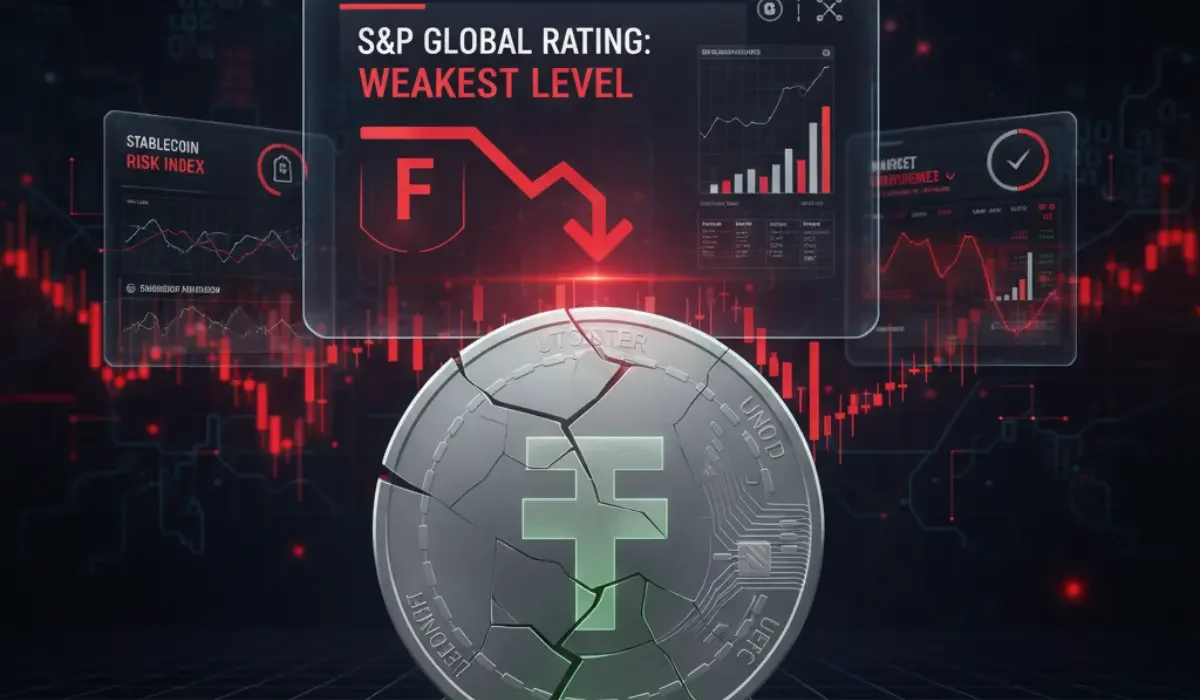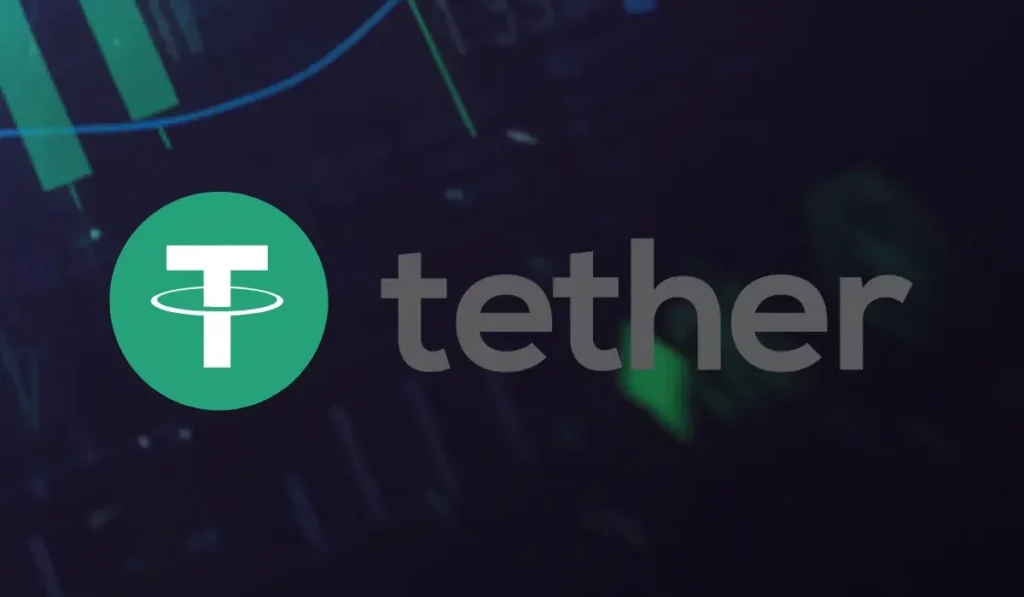S&P Global Cuts Tether’s USDT Stability Rating to Its Lowest Tier

Key Takeaways
- S&P pulls down the USDt rating to an all-time low.
- S&P justified its assessment, pointing out multiple risk factors plaguing Tether.
- Tether responded with a strong rebuttal and defiance.
- Tether completely disregards S&P’s rating and calls it outdated.
The clash between S&P Global and Tether has made headlines. The American corporation giant and one of the most favored stablecoins has decided to go head-to-head following the downgrade of USDt by S&P Global.
S&P Global officially downgraded USDt on 26th November, 2025, to a weak stability rating, the lowest on its five-point scale. This has sparked a new war between traditional finance and the digital asset ecosystem once again.
The downgrading happened as S&P found multiple concerning factors, including Tether’s rising exposure to high-risk assets. The insufficient transparency regarding the reserves of Tether added to this downgrading, as S&P views this as a serious breach in regulatory transparency compared to traditional financial systems.
S&P’s Problem With USDt’s Reserves
With this downgrade, S&P is signalling the increasing perceived risk associated with the world’s largest stablecoin. The analysts at S&P emphasized that the downgrade had to happen since there was a surge of nearly 24% in Tether’s reserves with high-risk assets as of September 30, 2025.
As this is a significant increase from 17% of the previous year, S&P views Tether’s strategy of diversifying its reserves as risky and non-transparent. The assets that are classified as high risk in Tether’s reserve include Bitcoin, Ethereum, Gold, secured loans, and corporate bonds. According to S&P Global, these assets are susceptible to market, credit, interest-rate, and foreign-exchange risks.
The report from S&P highlighted that Bitcoin now constitutes 5.6% of USDt in circulation. This has led to an increase in USDt’s overcollateralization margin by 3.9%. What this essentially translates to is that, if Bitcoin’s price were to plummet any time soon, USDt could become undercollateralized. This essentially threatens the 1:1 peg of USDt with the US dollar, which is the foundational principle for the existence of the stablecoin.
S&P Reviews Lack Of Transparency As An Issue
In addition to having a problem with Tether’s reserve, S&P has noted that Tether has often failed to have a proper disclosure. The report explicitly criticizes the lack of transparency in the information provided regarding the creditworthiness of Tether’s custodians, counterparties, and bank account providers.
S&P amplified its attack on Tether by accusing it of having little to no transparency regarding its regulatory frameworks. S&P took this argument to the spotlight by pointing out that Tether’s regulatory home is in El Salvador. As the regulatory home of Tether does not mandate asset segregation in case of an insolvency, S&P downgraded Tether’s trust score since asset segregation is mandatory in major financial jurisdictions like the United States.
These points are signalling a deep mistrust from the traditional financial sector towards Tether and its stablecoin USDt. It seems that the lack of regulatory clarity and operational transparency will cause trust issues for Tether and other major cryptocurrencies.
Tether’s Backlash To The S&P Downgrading
Unsurprisingly, Tether has fired back at S&P with fierce defiance. CEO Paolo Ardoino launched a strong rebuttal, publicly claiming that the S&P rating was “loathsome”. With several counterarguments, Tether dismissed the downgrade completely.
One of the major arguments put forward by Tether was that S&P’s framework of assessment was ill-equipped to carry out assessments of digitally native money. Tether added to this by stating that the assessment framework overlooks extensive data regarding USDt’s resilience to market volatility and the asset’s operational transparency.
Ardoino argued further that Tether is an overcapitalized company with a consistent track record that has displayed USDt’s resilience to market volatility. He added to this by stating that Tether or USDt has never failed in processing redemptions. Tether especially made references to its profitable performance over the first three quarters of 2025, bringing in 10 billion US dollars to the company. To add insult to injury, Tether invited S&P’s attention to the 13 billion US dollars worth of annual revenue in 2024.
Tether To Cease Redemption For EURt

In related news, Tether announced that it will cease the redemptions for its Euro-pegged stablecoin, EURt, from 27th November 2025. This puts further emphasis on Tether’s action plan to disregard comments from traditional finance and continue with its independent strategy.
Conclusion
While Tether continues to be the leader of the stablecoin market, S&P’s downgrade draws a sharp distinction in perceived risk levels between USDt and its major competitor, USDC, which holds a strong rating of 2. This clash underscores the ongoing battle for credibility and regulatory acceptance in the evolving financial landscape.
The market is closely watching this fight from the outside as its concerns linger on who will emerge victorious. Since Tether and USDt currently have a large user base, investors are in panic mode as S&P has made its verdict clear. However, there are investors and industry experts who argue that S&P should revisit its report, taking into consideration Tether’s arguments.
While the general market is hoping that the two powers will resolve things, uncertainty prevails with an air of fear and confusion among investors.
Also Read: Irys (IRYS) Price Prediction: IRYS Plummets After Listing, Can It Come Back?
Crypto & Blockchain Expert
